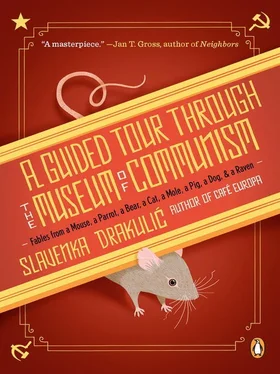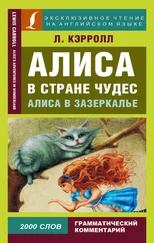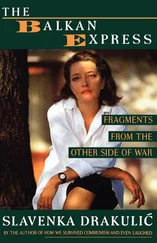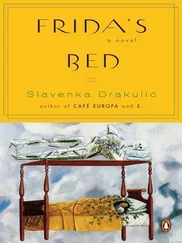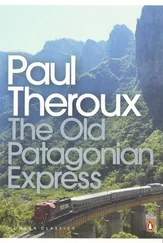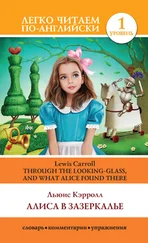Ah, but I am getting too pedagogical, I’m afraid! My dear Hans, you must tell me if I am treating you like a total ignorant, you must stop me if I am boring you! I guess my attitude comes from the fact that too many Americans pass the museum nowadays…
But you are telling me to go on? Okay then, where was I? Yes, I wanted to say that Communist regimes generally seemed to prefer numbers over stories. Numbers are abstract, they create a kind of “scientific” neutrality. Let me give you an example, used by Professor Perlík: In his history class I heard him tell his pupils that Hitler exterminated some six million Jews in Europe during the Second World War. They gave him a blank look and continued to chat, and to push and throw things at each other. The information didn’t even catch their attention—let alone their imaginations. But then, he took his class to Poland. They visited Auschwitz death camps. I remember them talking afterward about that visit, about how memorable that spring day had been for them. Of course, Professor Perlík had already told them before what had happened there, but still they were totally unprepared. Evidently, nothing can prepare you for such horror—and that is kind of good, he said. You grasp the horror better once you see, with your own eyes, heaps of human hair, shoes, glasses… heaps of them. All that, every item, belonged to an individual with a name, to a real live person. He also told them that during Communism, he could not have told his pupils that some thirty million people died in the labor camps in Siberia. It was taboo. But I suspect that the professor told them just that, landing himself in prison.
Now, let’s go back to what you actually see here—what you see here is only a pile of dusty things, like in an old antique shop or a flea market somewhere in Kosice (though I’ve never been there, I heard someone making this comparison). Therefore, it seems that it is more important to see the invisible yet omnipresent ugliness of the Communist mentality, of which the artifacts in this museum are just a reflection. By mentality, I mean a certain way of thinking and behaving that developed over decades under harsh conditions. Not solidarity, as you might expect of people living under duress, but its opposite, selfishness, a slow hardening of the soul (this formulation, you rightly guess, comes from the more poetic side of our professor). Yet, only art, especially literature, can show you that. Novels like those of a certain Milan Kundera, a writer whose name I have often heard mentioned in this museum of late.
Our visitors usually want to take photos in this particular room. For example, if they stand here, where I am standing, they can take a photo of this beautiful nineteenth-century crystal chandelier hanging from the ceiling. Indeed, they can get it in the same frame as the hammer and sickle—a really nice souvenir! By the way, this chandelier is widely considered by our visitors to be the only beautiful item in here. Although not intended as an exhibit, you could still say—as I have heard here—that it symbolizes the life of the bourgeoisie, the class enemy. As does this whole spacious apartment. “Look, a beautiful bourgeois apartment full of ugly things produced during Communism!” someone exclaimed recently.
I kind of like the fact that this is a museum of ugly things. By the time visitors like you arrive here, they have had their fill of the beautiful buildings in the neighborhood, so they don’t notice beauty any longer. Golden altars, baroque facades, angels, Madonnas, spectacular church paintings… Indeed, I have seen such things myself during my excursions into the neighborhood. Here, in this museum, like in real Communism, ugliness reigns. Sometimes I hear foreigners wonder aloud: “Why doesn’t Communism care about beauty?” You only need to go to the southern outskirts of Prague to see whole blocks of ghastly gray housing developments, called “ paneláky ” because they were built out of prefabricated material in the seventies. By the way, that material is great for us mice; it is so easy to make a nice home there! Yet, these buildings provided a home for millions of people (and mice)—for the so-called proletariat!—who moved from their villages to the city to work in industry. Milena and her Marek still live in such a building, in a two-room 63-square-meter apartment. They were happy when they got it in the sixties, after years of waiting in a single rented room heated by a coal-burning stove instead of an electric one or a central heating system.
Almost anything that was produced under Communism anywhere—from apartment buildings to clothes, from furniture to pots and pans—is considered to be ugly. Although this was not the case in this very country, the Communist system originally was built by and for poor peasants. Where would they get a sense of beauty? Functionality, not looks, was the priority in every aspect, the arts included; hence socialist realism, of course. Any divergence from that rule, say, abstract painting, was simply punished and forbidden—in the USSR after the thirties, for example. Art in general—painting, for instance—had a political-ideological-educational role, much as did medieval frescoes that explained the beginning of the world (and religion) to the masses. Ugliness was built into that system, I learned from Jana Strugalová, who taught art in our grammar school and was herself very beautiful. Some examples you see exhibited here, like the furniture in this “typical living room” (Soviet) where we are standing now. “Style of living,” it says. As if poverty were a “style”! Style is something one chooses; even a mouse can understand that…
Now, if you take a look at the representation of a typical school classroom to your right, what do you see? A blackboard, a few benches, and a cabinet—that’s where I live, by the way. It doesn’t tell you much, except for, perhaps, one detail. Have you noticed that the textbooks and the writing on the blackboard are in the Cyrillic alphabet? No? The Czech alphabet uses the Latin script. This exhibit obviously symbolizes a Soviet classroom. You must have noticed that the majority of objects exhibited so far have to do with the Soviet Union, not Czechoslovakia, as the country was called before the split in 1993. If you pay attention to the details, it is easy to conclude that the USSR is overrepresented in this museum, as one visitor observed. We are in Prague, after all, but all visitors get (as you yourself can witness) is a kind of written chronology of the Czechoslovak Communist Party in that corridor that you passed. This clearly suggests that Czechs see themselves as the victims of Communism, not as the “original sinners,” so to speak. Later you will see, when we come to 1968, that the rebellion against the Soviet occupation is much better documented. The rebellion is important, something to be proud of, therefore there are a lot of photos and even documentary films. As if the creators of this museum (but we are not supposed to bite the hand that feeds us, as Milena would say!) were a bit ashamed of Czech history, of the fact that, say, in the elections of 1946 some 40 percent of the people voted for the Communists. You’ll agree that the Czechs can’t blame the USSR for that!
Milena says that her family, like millions of others, was responsible for accepting the new political system. Theirs is by no means an exceptional story; nobody was jailed, murdered, or tortured. Her parents came here after the war from some Bohemian village and got a job in a furniture factory, happy to put their hard life on the land behind them. She and her brother (I saw him when he visited Milena here) went to a grammar school. Their parents insisted that they study because that was the only way to a better life, they believed. They were right. The brother became a doctor. Milena began studying foreign languages soon after she’d met her husband. He was a student of electrical engineering. When the baby came, someone had to work, and that someone was Milena. They both tried to stay out of politics, accepting party membership because it was the obvious way to get an apartment, a car, a vacation in Bulgaria. In hindsight, she admits, they were passive, meek, and submissive. A bit like us mice, you know… It was the only way if you were not prepared to go to jail, and we would like to forget that now.
Читать дальше
